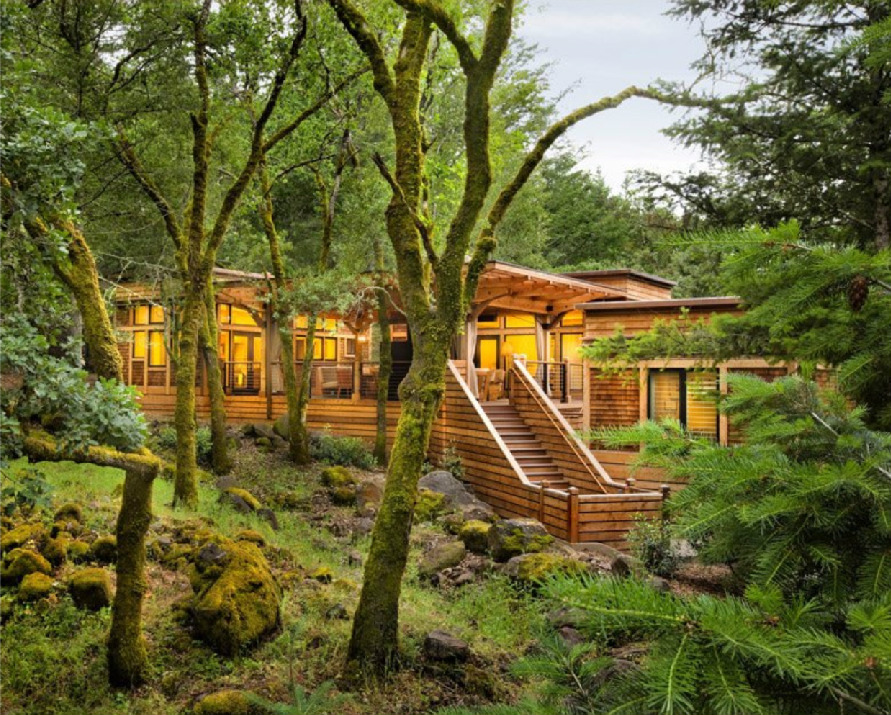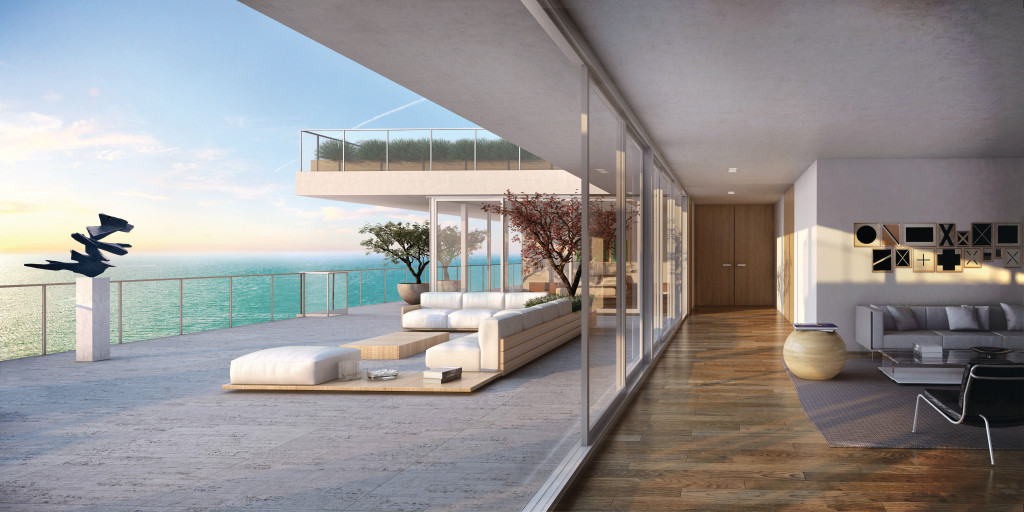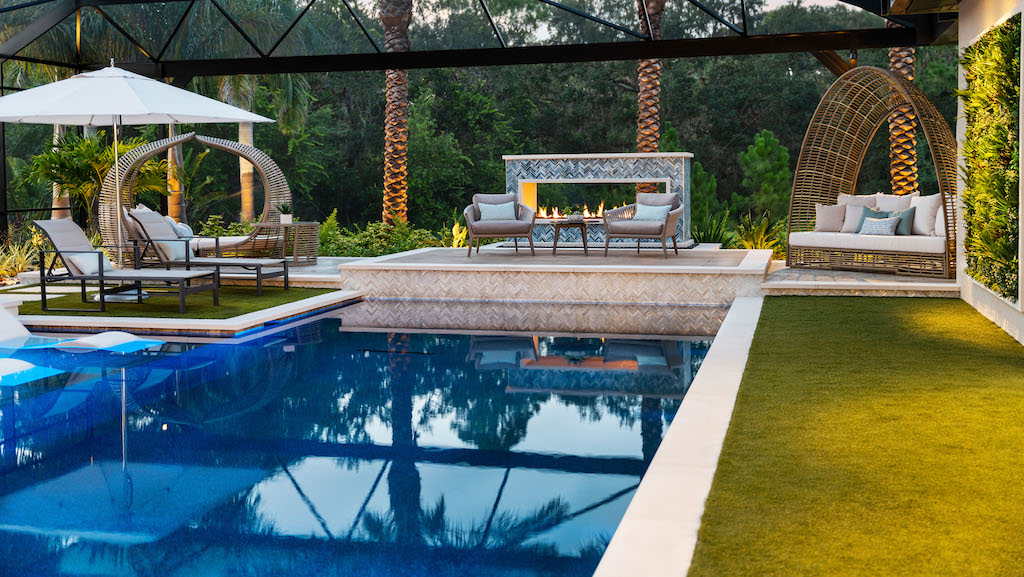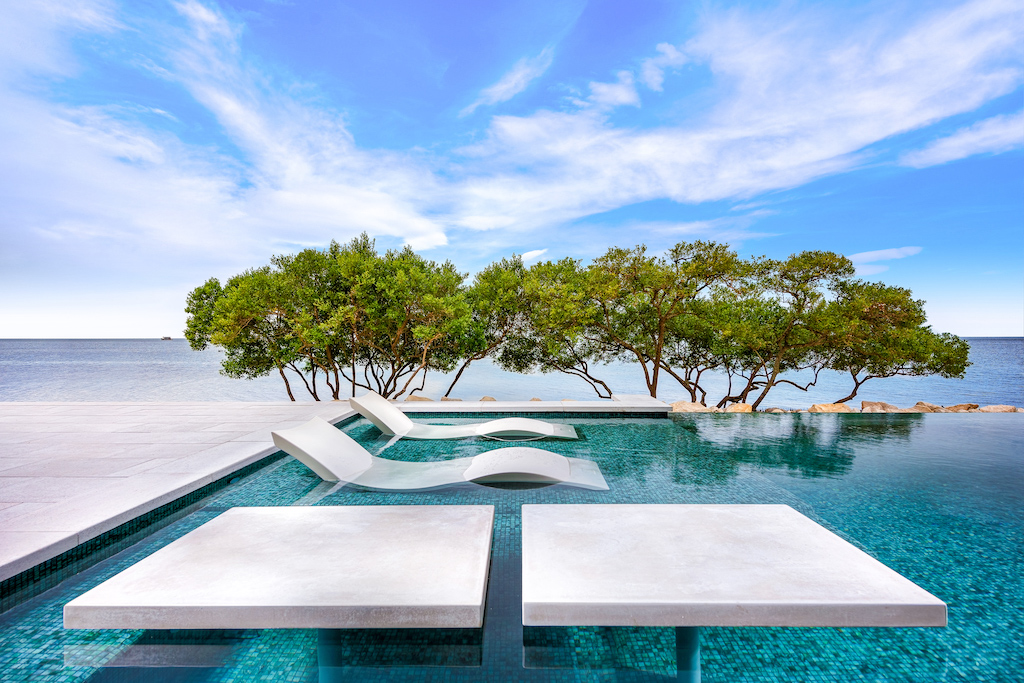It has often been said that design is intelligence made visible. Carrying this further, it could also be said that sustainable architectural design is green intelligence made visible. It is a major trend, not only in luxury homes, but in condos and master-planned communities.
By definition, sustainable architecture is one that seeks to minimize negative environmental impact by moderating the use of materials, energy, and development space, so as not to disrupt the Earth’s ecosystems. The growing awareness of natural-resource limitations has allowed the greater emergence and greater popularity of green building methods.
Jim Tinson, CEO of Hart Howerton, a multi-awarded architectural firm that works nationally and internationally, discusses an extended meaning of sustainability, moving it further from patterns of architectural strategy to those of deeper mind-body conversations: “When we start discussing sustainability to our clients, they really get interested when we discuss wellness and health in terms of architectural solutions. Sustainability does have a direct connection to personal, as well as environmental, health, and wellness.”
The intricate relationship between feeling well and living well has been consistently researched, mostly with the same finding: that contact with nature is beneficial, leading to improvements in mood, cognition, and overall health. Breathing good air, seeing nature, both in and out of doors, allows humans to feel better, think more clearly, and become more socially connected. Mind-body conversations can be enhanced by how we live and the dwellings that we live in
Hart Howerton’s recent work exemplifies this connection between well-built and well-being, in terms of sustainable residences and community developments. A good example of the former is a residential project based on the remote Esther’s Island on Massachusetts’ Nantucket coast, Esther's Island Cottage. The compound on Esther’s Island is deferential in its design to the coastal traditions of the island.
Through an integrated project-planning approach, construction specialists, energy experts, and designers all collaborated to develop comprehensive green solutions to the project, obeying LEED Gold Standards for Homes. The homes use multiple alternative clean-energy sources, a state-of-the-art septic system and leaching field, water-efficient fixtures, and renewable or reclaimed materials. With no access to utilities, a wind turbine and solar arrays provide the compound with 90 percent of its energy (propane is used for cooking and limited backup for supplemental heating). There is also a vertical-axis turbine, which spins like a barber’s pole and is efficient in low wind.
Defined by the use of sustainable strategies, materials, and narratives, Hart Howerton is also known for its sustainable work in luxury residential and recreational communities in uniquely eco-sensitive areas.
One of the most well-known is the Santa Lucia Preserve in California, a 20,000-acre preserve in the Santa Lucia Mountains, where the design team helped develop the community. “Our primary design philosophy is to subordinate the architectural design and buildings to the continuity of the landscape,” David Howerton, landscape architect and chairman of Hart Howerton, noted on the preserve's website.
It looks more like a national park than a luxury housing development. There are redwoods, live oaks, and native grasses. When Santa Lucia Preserve founder Tom Gray and partners purchased the intact property in 1990, their vision was singular: to respect the bio-diversity of the preserve in perpetuity. Only 300 home sites are on the owner-governed community, and permanent conservation deeds have been placed on 90 percent of the land. When it comes to architecture, treading lightly is the obligation, not the option.
SB Architects, a San Francisco-based firm, is one of the leading companies to use green practices. Of the company’s mission, the firm’s majority partner, Scott Lee, explains, “Our team honors each architectural site by designing solutions that are inspired by three things: regional vernacular, local materials, and the unique sense of place inherent to each property. So, our client conversation revolves more around an active dialogue on how together we create iconic, authentic, and sustainable projects.”
The client conversation was easy in the creation of the Hillside House in Mill Valley, California, near San Francisco, as the architect and the client were the same person, Lee. This home is the first LEED for Homes Platinum-certified house in Marin County and is one of only a handful in California. His personal residence, the home was designed in direct response to the site, trees, and views.
Carved into a steep hillside, and set amid towering oaks, the four-story home is constructed around the trees, driven by the views, and defined by the intimate relationship between indoor and outdoor. Private living zones are set on their own floors, and every space has a private terrace. Built on an infill lot close to town, the house is designed to maximize solar orientation for the photovoltaic panels, passive heating, and cooling. Local availability, recycled content, and sustainable production drive the selection of each material, appliance, and detail.
With the iconic Calistoga Ranch in Sonoma, it was up to SB Architects to create a resort on a 52-acre California live oak parcel and not despoil or do damage to the ancient trees. So, the Lodges at Calistoga Ranch were formed around the trees, with many lodge terraces built with ancient trees growing up through the terraces.
There is, no doubt, the emergence of a certain architectural trend: creating stewardship, not ownership, of land; personal wellness follows clean energy; listen to the voice of the land. Follow the sun.
Many homes are now designed as sustainable luxury condos in sustainable buildings, making many into sustainable, urban resorts, where wellness is the new luxury.
A 240-unit luxury condominium completed in 2017, Oceana Bal Harbour, lies in the enclave of Bal Harbour, Florida. The developer, Eduardo Costantini, is also an art collector, who preserved natural greenery––about 70 percent of the property’s land––by utilizing trees, reflecting pools, and lawns. The glass tower is LEED-certified and resource efficient, using less water and energy, and reducing greenhouse gas emissions.
Other green and sustainable features include special turtle lighting, which offers low-wattage/long-wavelength amber LED sources, so that turtles will not be confused by artificial light. Another green addition is the planting of native flora and fauna, in order to allow for less exotic plant water consumption. Finally, the entire building is wrapped with two layers of insulated glass. The walls consist of one layer of laminated glass, followed by an inch of air duct to absorb noise, and another layer of laminated glass. Thus, noise pollution is minimized.
The luxury condominium sits parallel to the Atlantic Ocean, with units ranging from $3 million to $30 million. Residents also co-own the Oceana’s significant art collection, composed of master works by internationally acclaimed artists Jeff Koons, Callum Innes, An Te Liu, Jorge Méndez Blake, Taryn Simon, Juan Uslé, and Garth Weiser.
The addition of original art complementing the beauty of the environment adds an important wellness criterion to those who live well at Oceana Bal Harbour.
Muse Residences in Miami combine other relevant wellness criteria, garnered from wellness and mind/body research from Dr. Deepak Chopra and Delos. This collaboration began work at the Stay Well rooms and suites at the MGM Grand in Las Vegas. Now, they have moved into another dimension in Miami with an exceptional concept that combines wellness with architectural synchronicity. The 68 residences will be ready for move-in in January of 2018.
A few ideas that enhance the Muse wellness experience are air-purification systems that remove allergens, toxins, and other pollutants; water-filtration systems that reduce chlorine, lead, and other pollutants to provide the cleanest water possible; and the circadian lighting system that creates lighting conditions that mirror natural sunlight throughout the day, keeping one’s circadian rhythm in check.
Arguably, it could be said that sustainability, originally defining a trend, has become more of an ethical commitment to both the environment and consumer. For the environment, cleaner water, better air, and a greener world; for the consumer, a way of living that allows deeper engagement, enjoyment, and enlightened wellness.
Images courtesy of SB Architects / Oceana Bal Harbour
This story is featured in the Summer/Fall 2017 issue of Haute Residence magazine.







